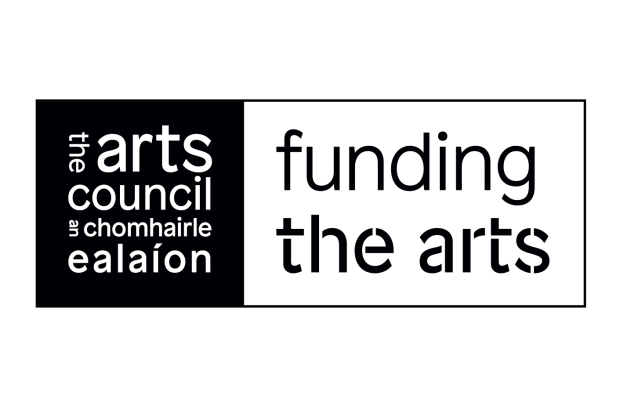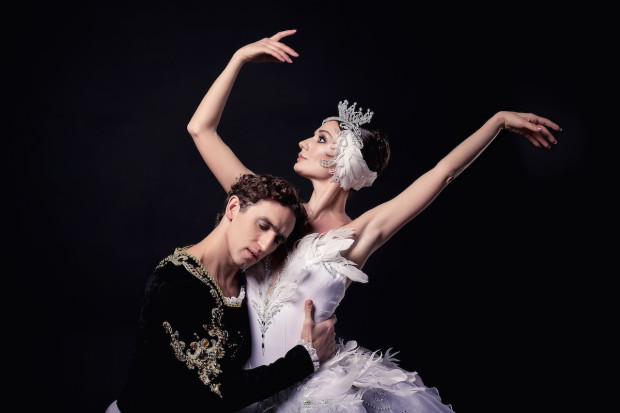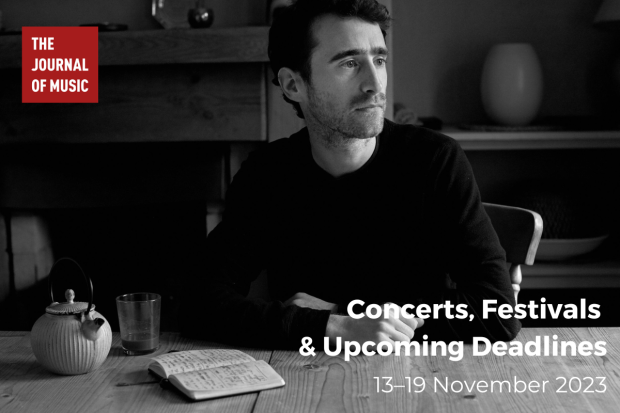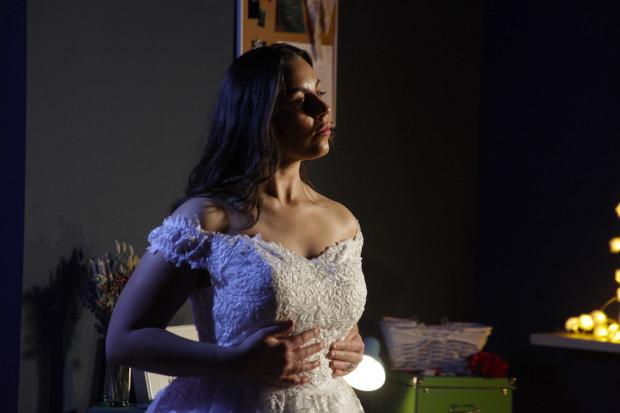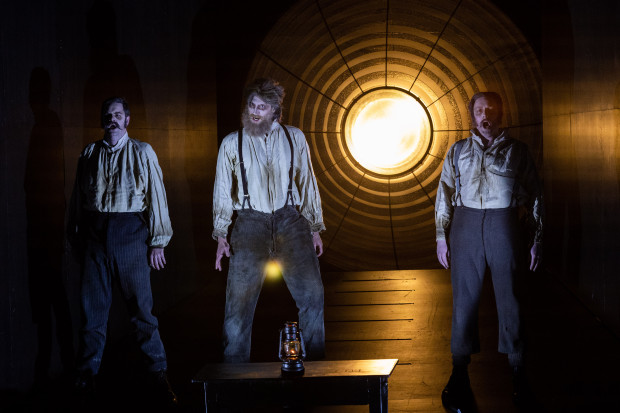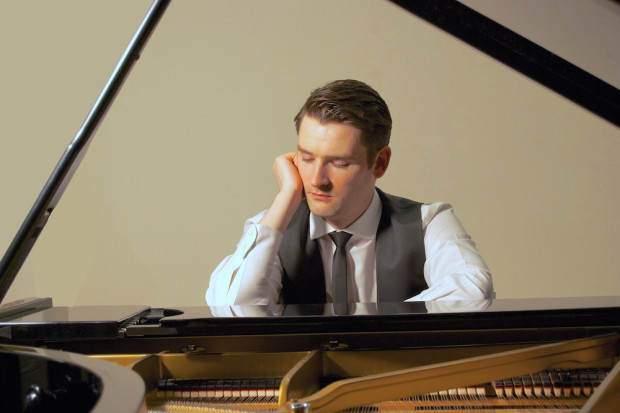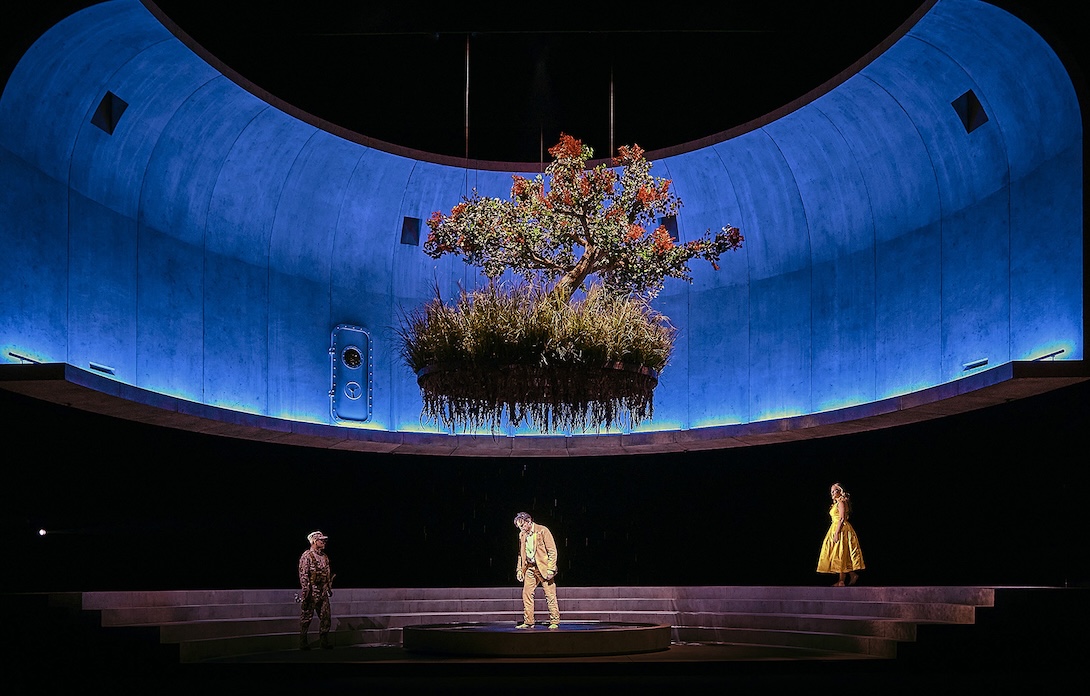
Irish National Opera's 'Salome' (Photo: Patricio Cassinoni)
The Erotic and the Murderous: Irish National Opera's 'Salome'
Richard Strauss’ Salome is one of the few operas in the repertoire that truly lacks a central character worthy of the audience’s sympathy. While one might initially get behind Salome herself as a sexually liberated young woman battling against the lecherous patriarchy of Herodes’ corrupt court, her spoilt brat persona negates this possibility long before her necrophiliac desires fully manifest themselves at the opera’s finish. On the other hand, the object of her affection Jochanaan is a pious fanatic whose lengthy sermons have all the charm of a fundamentalist evangelical preacher. In place of high ideals such as love or heroism, what captures our fascination is the potent combination of the erotic and the murderous.
In the programme notes, director Bruno Ravella contrasts Salome’s love as ‘eros: the old god of desire’ against that of Jochanaan’s ‘agape: the spiritual love of the new god for his followers’. This conflict between erotic desire and spiritual purity formed the production’s central tension and manifested itself most strikingly in the staging designed by Leslie Travers which must rank as one of the most visually arresting that Irish National Opera has ever managed.
At the outset, it consisted of a bare concrete capsule with tiered steps surrounding a circular clump of lush vegetation. When Salome (Sinéad Campbell Wallace) is led down to Jochanaan’s (Tómas Tómasson) cell, the vegetation lifted to reveal dangling roots that remained suspended, chandelier-like, above the set for the remainder of the opera. A circular disk of shallow water was revealed at the centre of the stage.
While undeniably beautiful, the minimalist restraint did seem to suppress some of the opera’s sexually charged energy. For instance, the scene in which Salome becomes transfixed by Jochanaan’s physical beauty is musically one of the most tantalising in the entire opera. However, the implicit sexuality of the encounter was dampened somewhat by having Jochanaan plod around barefoot in the water dressed in a shabby suit. As it turned out, the water element was a tee up for a baptism gesture in which Jochanaan poured water over the head of Salome at the end of this scene. While clever – Jochanaan is John the Baptist at the end of the day – the prolonged set up did seem at odds with the heady sensuousness of the music.
The tiered backdrop worked particularly well in the famous ‘Dance of the Seven Veils’, which started with Salome enticingly playing with her own silhouettes on the top step and culminated with her furiously dipping her hair in water and splashing about in a fury of petulance. In the final scene, the suspended vegetation glowed blood red and the central disk provided a podium for her caressing of Jochanaan’s severed head.

Sinéad Campbell Wallace and Tómas Tómasson (Photo: Patricio Cassinoni)
Strong cast
In terms of singing, the opera had possibly the most uniformly strong cast ever assembled for an INO production. Campbell Wallace was simply outstanding in one of opera’s most notoriously demanding soprano roles. She brilliantly executed Liz Roche’s tasteful choreography for the ‘Dance of the Seven Veils’ and maintained her stamina right through to the lengthy final aria. Equally impressive was the soaring tenor voice of Vincent Wolfsteiner whose buffoonish lechery in the role of Herodes provided the indispensable comic element while the booming voice of bass-baritone Tómasson made for a compelling Jochanaan. The production also featured some excellent singing across the minor roles with a particular highlight being the rapid-fire exchanges amongst the Jews arguing about the nature of God.
As with Strauss’ Der Rosenkavalier last year, the INO orchestra under Fergus Sheil overcame the space limitations of the orchestra pit in the Bord Gáis Energy Theatre, managing to produce a rich sound with only a fraction of the string complement that Strauss’ late-Romantic score demands.
While one can argue about how well certain aspects of the production aligned with the decadent expressionism of Strauss’ work, this was once again an original attempt to shed new light on a classic and demonstrated INO’s continued openness to risk and experimentation. This was certainly appreciated by the audience at the opera’s conclusion who greeted the cast with a tumultuous applause considerably louder than anything I can ever recall at the Bord Gáis. Indeed, there was the general sense that with this quality of singing and the consistent ambition of its productions, INO has broken into new territory this season. This naturally invites speculation about the kind of challenging repertoire it might take on in the near future – some Wagner next year perhaps?
Salome is at the Bord Gáis Energy Theatre for two more performances – Thursday 14 and Saturday 16 March. To book, visit www.irishnationalopera.ie/whats-on/current-upcoming/salome
Published on 14 March 2024
Adrian Smith is Lecturer in Musicology at TU Dublin Conservatoire.










